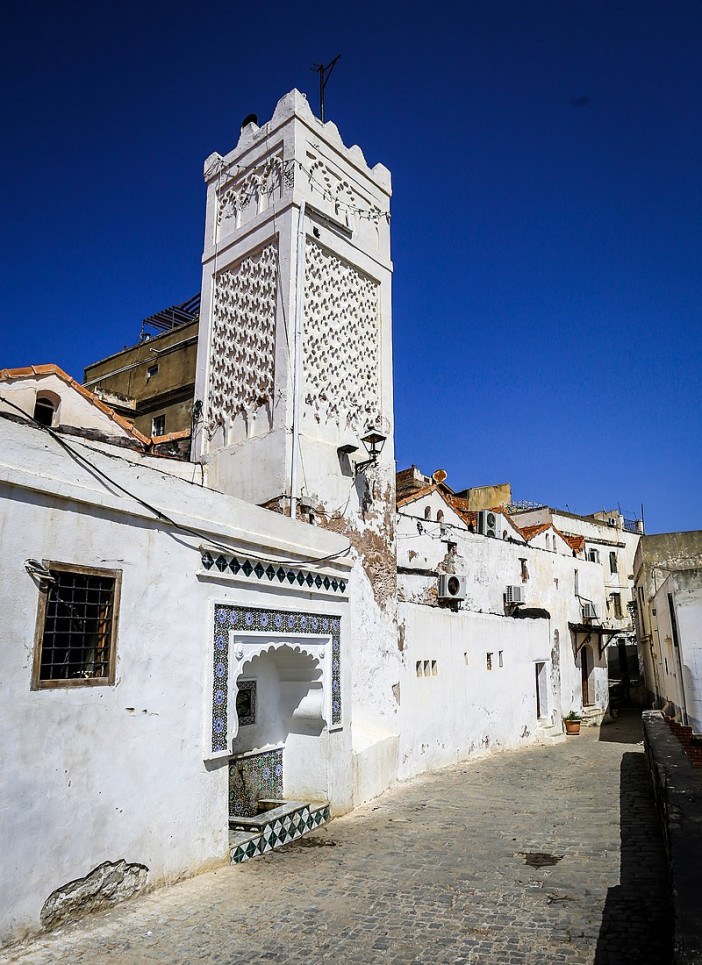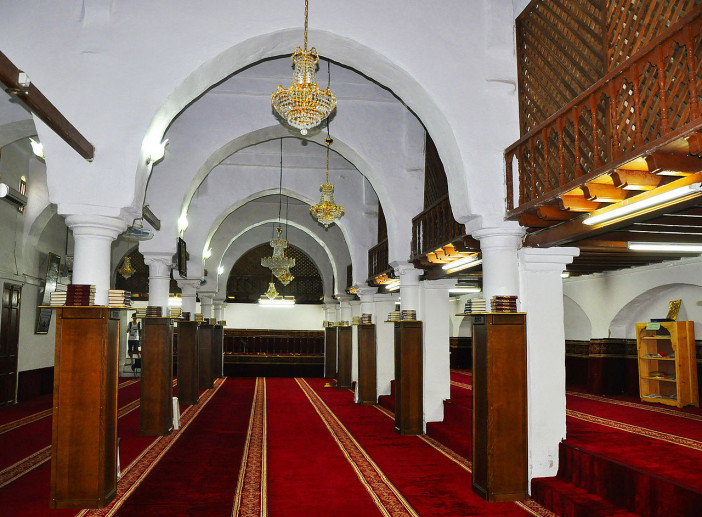Djamaâ Sidi Ramdane
History
Although the actual date of the mosque's foundation is unknown, it is known that it at least predates the city's Ottoman era. The late 11th-century Great Mosque of Algiers, which was built by the Almoravids, may have been roughly contemporaneous with its foundation, according to French archeologist Georges Marçais of the 20th century. After speaking with local authorities and mosque workers, the Algerian newspaper al-Hiwar revealed that the mosque's foundation was most likely established in the tenth or eleventh century. The mosque, which is situated in the upper portion of the city, served as the old Casbah (citadel or kasbah) border when Amazigh monarchs ruled the area.
In 1904, the mosque was made a part of Algeria's National Heritage.
In 1992, it was included as a component of the Casbah of Algiers on the UNESCO World Heritage Site List.
Urban and Architectural
With a hypostyle prayer hall split by rows of arches supported by columns, the mosque has a very straightforward shape. Elevated galleries or balconies that serve as the women's prayer area are located along the hall's three outside sides. The minaret that is connected to the mosque contains sebka carvings on its exteriors. Next to the mosque is a modest, independent mausoleum where Sidi Ramadan's remains are kept.
Description
The mosque bears the name of Sidi Ramadan, one of the troops who took part in Uqba ibn Nafi's early Muslim conquests of North Africa. Ramadan was named the city's chief by Uqba when Algiers was taken over. After passing away, he was interred inside the mosque's pillar. According to a different story about the origin of the name, Sidi Ramadan was a kind-hearted wali of Biskra. The mosque was actually known as Al-Qaid Ramadan Mosque, according to Sheikh Abdurrahman al-Gilani. He also mentions Ibn al-Mufta, who made significant contributions to the mosque's foundation.
References
Une architecture de lumière: Les arts de l'Islam en Algérie (provisional draft of book pending publication). Museum With No Frontiers. 2017. pp. 132–133. ISBN 978-3-902782-22-9.
Marçais, Georges (1954). L'architecture musulmane d'Occident. Paris: Arts et métiers graphiques. pp. 191, 426.
https://www.manar-al-athar.ox.ac.uk/pages/search.php?search=%21collection3074
Details
Location
Casbah of Algiers, Algeria
Worshippers
1000
Year of Build
1097
Area
400 square meters
Drawings
Map
History
Although the actual date of the mosque's foundation is unknown, it is known that it at least predates the city's Ottoman era. The late 11th-century Great Mosque of Algiers, which was built by the Almoravids, may have been roughly contemporaneous with its foundation, according to French archeologist Georges Marçais of the 20th century. After speaking with local authorities and mosque workers, the Algerian newspaper al-Hiwar revealed that the mosque's foundation was most likely established in the tenth or eleventh century. The mosque, which is situated in the upper portion of the city, served as the old Casbah (citadel or kasbah) border when Amazigh monarchs ruled the area.
In 1904, the mosque was made a part of Algeria's National Heritage.
In 1992, it was included as a component of the Casbah of Algiers on the UNESCO World Heritage Site List.
Urban and Architectural
With a hypostyle prayer hall split by rows of arches supported by columns, the mosque has a very straightforward shape. Elevated galleries or balconies that serve as the women's prayer area are located along the hall's three outside sides. The minaret that is connected to the mosque contains sebka carvings on its exteriors. Next to the mosque is a modest, independent mausoleum where Sidi Ramadan's remains are kept.
Description
The mosque bears the name of Sidi Ramadan, one of the troops who took part in Uqba ibn Nafi's early Muslim conquests of North Africa. Ramadan was named the city's chief by Uqba when Algiers was taken over. After passing away, he was interred inside the mosque's pillar. According to a different story about the origin of the name, Sidi Ramadan was a kind-hearted wali of Biskra. The mosque was actually known as Al-Qaid Ramadan Mosque, according to Sheikh Abdurrahman al-Gilani. He also mentions Ibn al-Mufta, who made significant contributions to the mosque's foundation.





